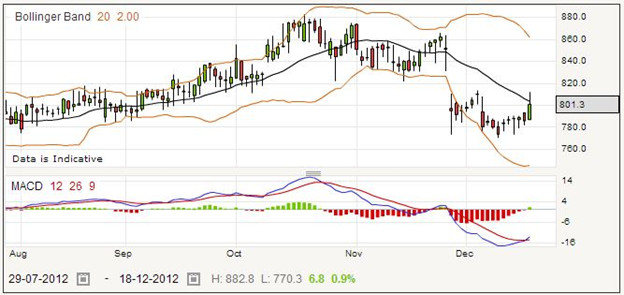Lancashire Holdings is a specialty insurance company that operates in Bermuda, London, and Dubai. Its headquarters are in Bermuda. It has been on a fairly steady growth pattern for a few years, although looking at the chart below from a spread betting perspective it seems that there may be good opportunities for profit.

The company was only formed in 2005, when it was launched on the Alternative Investment Market (AIM). It started at around 300, so as you can see the value has increased significantly, so much so that in February 2009 it was listed on the main market of the London Stock Exchange.
Lancashire Holdings specializes in four main areas of insurance – aviation, marine, energy, and property. Rather unusually for an insurance company, the majority of its business is primary insurance, and not re-insurance, which is when insurance companies spread the risk by contracting with other insurance companies. Its primary insurance proportion is running about 85%. The growth pattern shows that generally speaking this policy is paying off.
You can see from the chart above that there was a gap open towards the end of November, destroying a significant amount of the value. It appears this arose from revised forecasts by Barclays and J.P. Morgan. Barclays, earlier in November, only cut the forecast price by three pence, with little impact, but J.P. Morgan slashed their forecast of the value from £9.20 to £8.60 at the end of the month with the result that you can see above. The forecast given is a price target, and therefore the opinion of a fair value price at the time.
Despite this, Lancashire Holdings is basically in an uptrend, and if you are considering spread betting you would do well to view the prices on several time scales, depending on the type of bet that you are considering making.
Lancashire Holdings Rolling Daily: How to Spread Bet on Lancashire Holdings Shares?
Lancashire Holdings is a comparatively young company, but has had fairly consistent performance over the years it has been in business. If you believe that the price will go up over the next few days, you may want to place a long bet on the shares, which are currently quoted at 800.5 – 804.5 for a rolling daily bet. Say you decide to place a bet of £12 per point on this company.
As an example, assume that the price goes up as you had hoped, until it reaches 846.47 – 850.47. At this point you decide that the uptrend is weakening and may be over and you cash in your bet. Your bet was placed at the buying price of 804.5, and it closes at the selling price of 846.47. That means you have gained 846.47 minus 804.5 points, which works out to 41.97 points. Multiplying by your stake of £12 per point, you would have won £503.64.
If things did not work out for you, and the price went down after you placed your bet, you might decide that you should cut your losses when the quote reaches 772.92 – 776.92. The opening price was once again 804.5. This time the bet closed at 772.92, which would give you a point loss of 31.58. With a stake of £12 per point, this losing bet would have cost you £378.98.
Many spread betters decide to use a stop loss order, as this means your spread betting provider will keep an eye on the market for you even if you cannot. If you had used a stop loss order on this bet, you might find that the losing bet would have been closed earlier, saving you some money. Say the bet closed at 782.11 – 786.11. Taking 782.11 away from 804.5, you would find that you had lost 22.39 points. For your chosen size of stake that works out to a loss of £268.66.
Lancashire Holdings Quarterly Futures Style Bet
Futures style bets are good when you think that you may want to hold the bet open for some time, such as weeks or months, as unlike rolling bets there are no price adjustments to your account. Suppose you have a bearish outlook for the medium-term, and decide to place a far quarter futures bet for £8 per point. The current price for the far quarter is 803.6 – 813.3, therefore your short bet goes on at 803.6.
Fast forward a few months, and the price is down to 734.65 – 744.35. You decide to collect your profits, and close your trade at the buying price of 744.35. That means you have gained 803.6 minus 744.35 points which works out to 59.26 points. You wagered £8 per point, so your profit is £474.08.
That of course is the best case, and if you have been trading for more than a week or two you will know that frequently the market does not go in the direction that you intend. So looking at a losing case, it might be that the price went up to 840.38 – 850.08. Your closing price this time would be 850.08. 850.08 less 803.6 is 46.48 points, so at your initial stake this is a loss of £371.84.
Even though you placed a futures style bet, if the market turns against you straightaway you can close the bet at any time and minimize your losses. One of the ways to do this that does not require you to be watching the computer all day long is to use a stop loss order, which you place with your broker when you take out the initial bet. With a stop loss order on this bet, perhaps your broker would have closed it when the quote went up to 826.59 – 836.29. With an opening price of 803.6 and a closing price of 836.29, you have lost the difference of 32.68 points. That would work out to a total loss of £261.44.